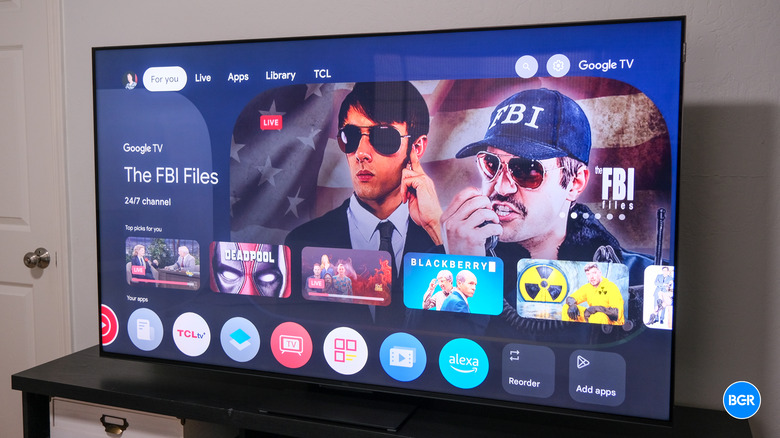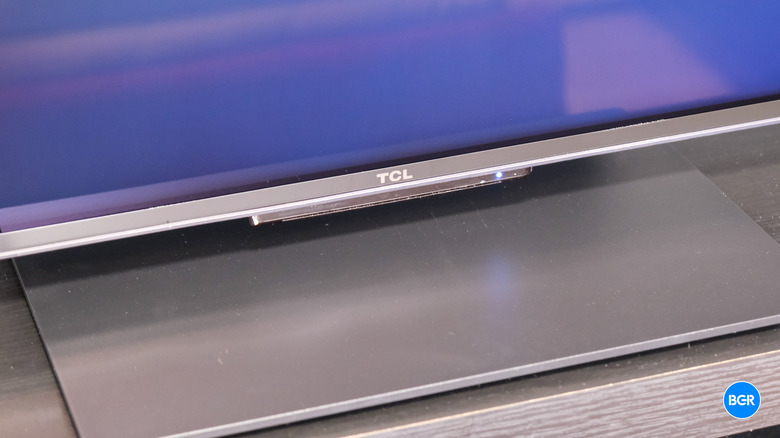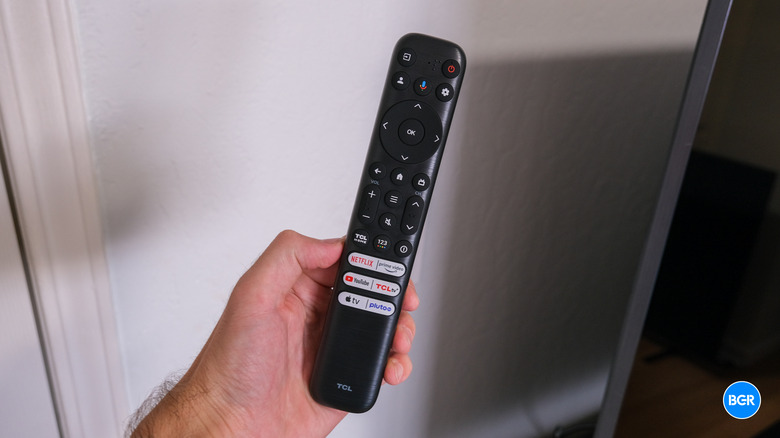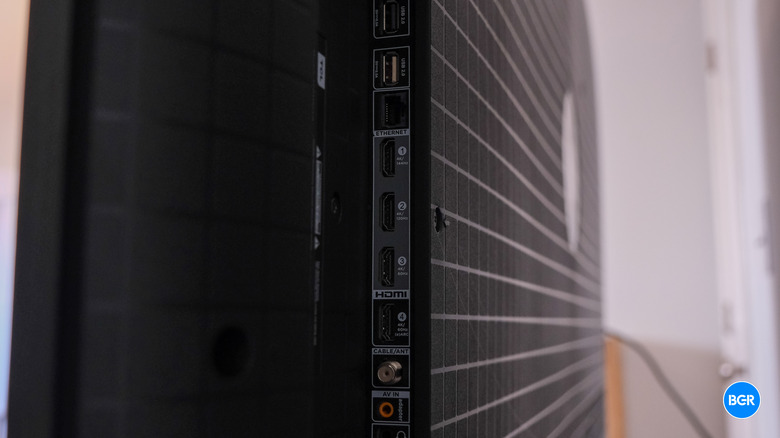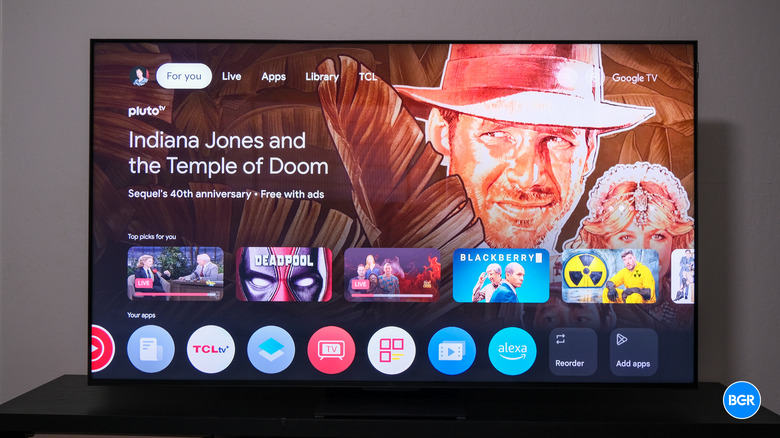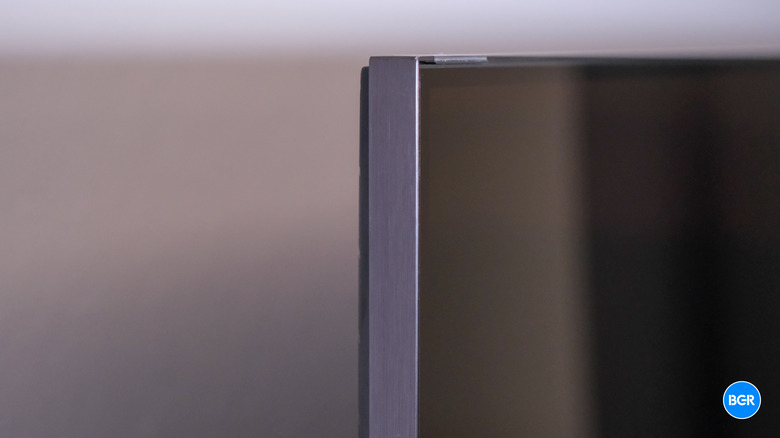TCL QM8 Review: Incredible Value
- Stunning image
- Deep black levels
- Software works well
- Solid gaming features
- 65-inch is the smallest option
| Buy From | List Price | Sale Price | |
|---|---|---|---|
| Amazon | $1699 | $1699 | See It |
We may receive a commission on purchases made from links.
The state of mid-range TVs is excellent right now. While the likes of Samsung and LG still dominate the high end, Chinese companies like Hisense and TCL are building TVs that are 90% as good for 50% of the price. This year, we're spoiled with two stunning mid-range models in the Hisense U8N and the TCL QM8.
I've already reviewed the Hisense U8N and found it to be an incredible TV for the price. But for the past few weeks, I've been testing out its biggest competitor in the TCL QM8. The QM8 may not be as massive as its cousin, the 115-inch QM89, but it still has a lot to offer, including coming in slightly more palatable sizes, like the 65-inch model I'm reviewing.
How does the TCL QM8 compare against what many consider to be the best TV under $2,000? I've been using the TCL QM8 for a while now to find out.
TCL QM8 specs
| Display size | 65, 75, 85, 98, inches |
| Resolution | 3840 x 2160 |
| Display type | QD Mini-LED |
| Refresh rate | 144Hz |
| Ports | 2 x HDMI 2.1, 2 x HDMI 2.0, USB 2.0, optical, ethernet, aux |
| HDR support | HLG, HDR10+, Dolby Vision |
| Software | Google TV |
| Price | $1,699.99 – $7,999.99 |
A sleek and stylish design
I quite like the overall design of the TCL QM8. It's not necessarily the most premium TV out there, and it's not as thin or as well-designed as a TV like the Samsung S95D, but the S95D is a much more expensive TV too. And as far as TVs in this price range go, the TCL QM8 looks good and feels solid.
I like the fact that mid-range TV manufacturers have been moving to a stand instead of feet, and on the QM8, you can set that stand in one of two positions, a higher one and a lower one. But while the stand looks better on its own, it is a little more disruptive for those that use a soundbar. In the lower position, a soundbar will block the TV's screen, so if you use a soundbar, you'll want to use it in the higher position.
The TV is relatively thin, though of course not quite as thin as some more expensive options that have a connection box instead of building ports and processing directly into the TV. Again, though, it's still relatively thin, and it'll look great on any TV stand or entertainment center or mounted to the wall.
The TV isn't quite as heavy as some alternatives, but it is still relatively heavy and large considering the fact that the smallest size is 65 inches. You'll want to set it up with a friend.
The port selection we would expect
The TCL QM8 offers about what we would expect as far as ports go, though I am hoping that TVs in this price range start offering all four HDMI ports as HDMI 2.1. As it stands right now, you'll get two HDMI 2.1 ports along with two HDMI 2.0 ports. For heavy gamers with multiple consoles, the fact that the HDMI eARC port doesn't use HDMI 2.1 will be good news. However, the flip side of that is that eARC is limited to HDMI 2.0 bandwidth.
On top of the HDMI ports, the TV offers two USB 2.0 and one USB 3.0 ports, along with an optical audio port and a headphone jack. There's also an Ethernet port for wired data. As you look at the TV screen, the power port is on the left-hand side at the back, while the HDMI ports and other inputs and outputs are on the right side.
It's a good selection of ports and pretty much everything you'll need in 2024, though again I am hoping that manufacturers in this price range will put HDMI 2.1 in all of the HDMI ports.
A sleek and slender remote
The remote that comes with the TCL QM8 is built entirely from black plastic, but it looks and feels relatively nice. It's a long and slender remote predominantly used for software control, including a button to access Google Assistant. There are also quick access buttons for streaming services, including Netflix, Prime Video, YouTube, and Apple TV. Unfortunately, two of these buttons are taken up by TCL Channel and TCL Home, which feels like a bit of a waste. I would have preferred buttons for Hulu or Max.
The build of the remote isn't quite as nice as the remote that comes with the Hisense U8N, but I do prefer the overall shape and feel of it.
Fast Google TV with extra Apple features
The setup process is relatively straightforward. If you're using the included foot, you'll screw that into the back of the TV, and you can choose from one of two positions, which is nice. I selected the lower position, which looked very sleek, but it would block a soundbar if I used the TV with one. Once you turn on the TV, you'll sign into your Google account and install any updates if there are any available. Once updates are installed, you'll be able to select which streaming services you want downloaded to the TV.
As part of the setup process, you'll pair your remote. Some people get confused about the remote pairing process considering the fact that the remote works out of the box with batteries in it. The pairing process pairs the remote to the TV through Bluetooth, which allows it to work without line of sight. When it's working out of the box, it's doing so through infrared codes that it sends to the TV and that require line of sight.
The TCL QM8 has Google TV built into it. Google TV has gotten a lot better over the years, and TVs have gotten a lot better at running it without too many freezes or slowdowns. I'm an Apple TV user, and there's still nothing that can run quite as quickly as an Apple TV. But the Apple TV is also a separate hardware device that doesn't necessarily come cheap in a world of built-in software and cheaper streaming sticks. That said, I did still find that the TCL QM8 was able to run Google TV fairly easily.
The TV offers other smart features for those who aren't within the Google ecosystem, too. For example, it works with Apple HomeKit, so you can add it to your HomeKit home and access controls straight from the Apple Home app. And it has AirPlay 2 built into it, allowing you to stream content to the TV from your iPhone or other Apple device. Of course, these are features that you'll get if you use an Apple TV with the QM8, but if you don't have an Apple TV and still largely use Apple devices, it's nice to be able to gain some controls for your TV.
The TV is a great option for not just console gamers, but also PC gamers. It supports variable refresh rate technology for use with modern consoles, plus it supports AMD FreeSync. And it has very low input lag when you run games at 120Hz. At 240Hz, input lag is a little higher, but it's still easily low enough.
Stunning image quality overall
The TCL QM8 leverages a range of modern technologies to display a better image. For starters, it's a Mini-LED TV, which means it has thousands of dimming zones for more natural black levels and higher contrast. On top of that, the TV makes use of Quantum Dot technology, which allows it to deliver higher levels of brightness and more vibrant colors. On paper, this TV should be among the best Mini-LED TVs out there.
Specifically, the 65-inch model of the TCL QM8 offers over 2,300 dimming zones and is able to deliver a brightness of up to 2,000 nits. That's very high, and the brightness is a clear advantage of using technology like Mini-LED over OLED display panels, although high-end OLED TVs, like the Samsung S95D, are getting a whole lot brighter, too. That said, the QM8 really does get incredibly bright — brighter than the vast majority of alternatives out there.
The image quality on the TCL QM8 is excellent. The Mini-LED backlighting allows it to deliver on that promise of deep and natural-looking black levels. Sharp eyes may notice some minor blooming with very bright objects on a very dark background. However, this was uncommon and unintrusive the majority of the time. The TV is pretty good at handling reflections, ensuring that lights aren't distracting in darker scenes.
In HDR, the TV was able to deliver a high level of contrast with stunningly bright colors and a natural overall look. The same was true in SDR, and I found that the TV's upscaling was mostly quite good, especially when coming from content already in 1080p. Lower-resolution content won't look quite as sharp, but that's to be expected.
Gaming on the TV was great, too. I tested the TV with a PlayStation 5 and found it to look smooth and clear thanks to the built-in support for variable refresh rate.
Of course, the real question is how this TV compares to the Hisense U8N. The TVs are extremely close, and whether you buy the TCL or the Hisense, you'll find that you get excellent image quality overall. I find that the U8N is ever so slightly better at handling reflections and offering deeper black levels with a little less blooming. But the difference is incredibly minimal, and the vast majority of users won't notice it.
Fine audio performance, in a pinch
The TCL QM8 offers a 2.1 speaker system built in, which includes a subwoofer on the rear of the TV. The audio quality in general was fine in a pinch, but like almost all TVs with built-in speakers, it really was just fine. I did like that there was a little more bass than some alternatives, but the majority of users will still want to use the QM8 with a decent soundbar. Even a cheaper soundbar will sound better than the speakers built into this TV.
Conclusions
The TCL QM8 continues the trend of TCL mid-range TVs offering incredible image quality at lower prices than high-end alternatives from the likes of Samsung and LG. The TV isn't perfect. The audio quality is only fine, and its design isn't necessarily quite as premium as higher-end options, but it delivers a high level of brightness, super deep black levels, and vibrant colors overall. You will need to be comfortable with buying a TV that's 65 inches or bigger to get it, though, and a 55-inch option would have been nice.
The competition
Should you go for the TCL QM8 or the Hisense U8N? Well, it's not that simple. Both TVs offer stunning image quality for the price, and no matter which one you go for, you'll be very impressed. I did like the design of the TCL QM8 a little better than the blockier Hisense U8N. However, I also felt like the Hisense U8N was slightly better at handling deep black levels without introducing blooming. The blooming on the QM8 was barely noticeable, though. So, don't expect the Hisense to offer radically better image quality, because it doesn't.
Should I buy the TCL QM8
Yes, consider the Hisense U8N as well, but the TCL QM8 is an excellent TV.
